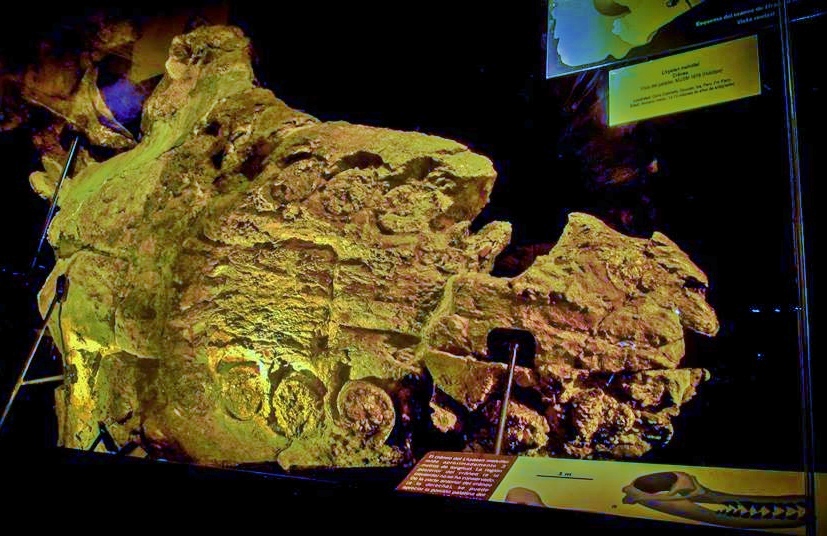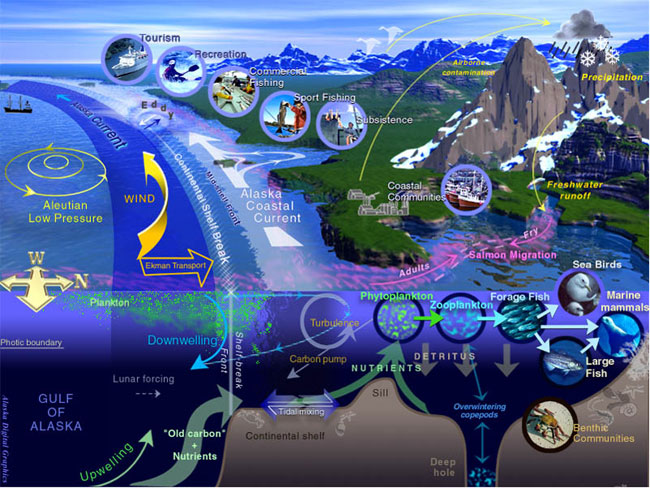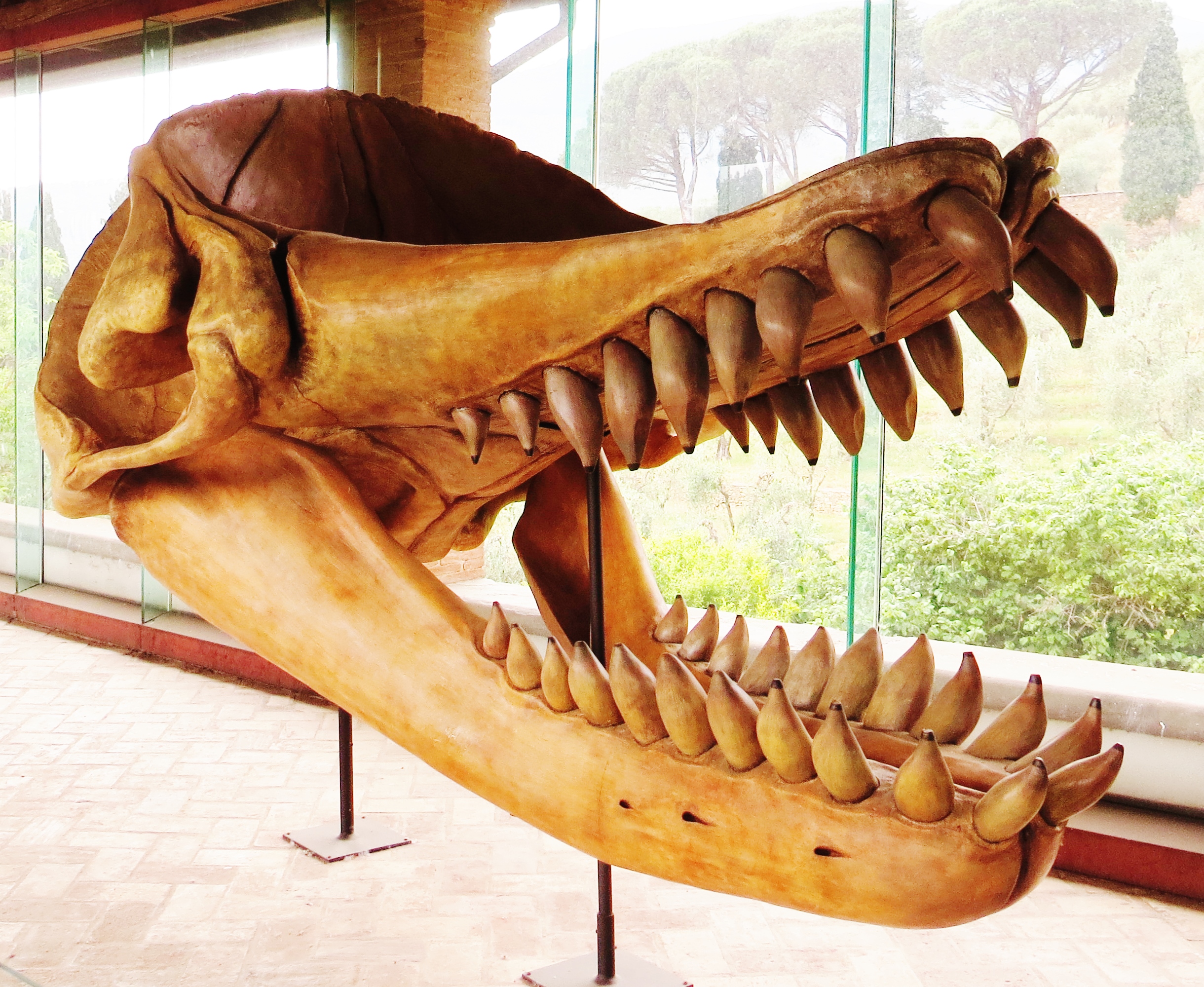|
Megalodon
Megalodon (''Otodus megalodon''), meaning "big tooth", is an extinct species of mackerel shark that lived approximately 23 to 3.6 million years ago (Mya), from the Early Miocene to the Pliocene epochs. It was formerly thought to be a member of the family Lamnidae and a close relative of the great white shark (''Carcharodon carcharias''). However, it is now classified into the extinct family Otodontidae, which diverged from the great white shark during the Early Cretaceous. While regarded as one of the largest and most powerful predators to have ever lived, the megalodon is only known from fragmentary remains, and its appearance and maximum size are uncertain. Scientists differ on whether it would have more closely resembled a stockier version of the great white shark, the whale shark (''Rhincodon typus''), the basking shark (''Cetorhinus maximus'') or the sand tiger shark (''Carcharias taurus''). The most recent estimate with the least error range suggests a maximum length e ... [...More Info...] [...Related Items...] OR: [Wikipedia] [Google] [Baidu] |
Livyatan
''Livyatan'' is an extinct genus of macroraptorial sperm whale containing one known species: ''L. melvillei''. The genus name was inspired by the biblical sea monster Leviathan, and the species name by Herman Melville, the author of the famous novel ''Moby-Dick'' about a white bull sperm whale. It is mainly known from the Pisco Formation of Peru during the Tortonian stage of the Miocene epoch, about 9.9–8.9 million years ago (mya); however, finds of isolated teeth from other locations such as Chile, Argentina, South Africa, and Australia imply that either it or a close relative survived into the Pliocene, around 5mya, and was present throughout the Southern Hemisphere. It was a member of a group of macroraptorial sperm whales (or "raptorial sperm whales") and was probably an apex predator, preying on whales, seals, and so forth. Characteristically of raptorial sperm whales, ''Livyatan'' had functional, enamel-coated teeth on the upper and lower jaws, as well as several featur ... [...More Info...] [...Related Items...] OR: [Wikipedia] [Google] [Baidu] |
Great White Shark
The great white shark (''Carcharodon carcharias''), also known as the white shark, white pointer, or simply great white, is a species of large mackerel shark which can be found in the coastal surface waters of all the major oceans. It is notable for its size, with larger female individuals growing to in length and in weight at maturity. However, most are smaller; males measure , and females measure on average. According to a 2014 study, the lifespan of great white sharks is estimated to be as long as 70 years or more, well above previous estimates, making it one of the longest lived cartilaginous fishes currently known. According to the same study, male great white sharks take 26 years to reach sexual maturity, while the females take 33 years to be ready to produce offspring. Great white sharks can swim at speeds of 25 km/h (16 mph) for short bursts and to depths of . The great white shark is an apex predator, as it has no known natural predators other than, on v ... [...More Info...] [...Related Items...] OR: [Wikipedia] [Google] [Baidu] |
Mackerel Shark
The Lamniformes (, from Greek ''lamna'' "fish of prey") are an order of sharks commonly known as mackerel sharks (which may also refer specifically to the family Lamnidae). It includes some of the most familiar species of sharks, such as the great white, as well as more unusual representatives, such as the goblin shark and megamouth shark. Members of the order are distinguished by possessing two dorsal fins, an anal fin, five gill slits, eyes without nictitating membranes, and a mouth extending behind the eyes. Species in two families of Lamniformes – Lamnidae and Alopiidae – are distinguished for maintaining a higher body temperature than the surrounding water. Members of the group include macropredators, generally of medium-large size, including the largest macropredatory shark ever, the extinct ''Otodus megalodon,'' as well as large planktivores. The oldest member of the group is the small (~ long) carpet shark-like ''Palaeocarcharias,'' known from the Middle and Late ... [...More Info...] [...Related Items...] OR: [Wikipedia] [Google] [Baidu] |
Marine Life
Marine life, sea life, or ocean life is the plants, animals and other organisms that live in the salt water of seas or oceans, or the brackish water of coastal estuaries. At a fundamental level, marine life affects the nature of the planet. Marine organisms, mostly microorganisms, produce oxygen and sequester carbon. Marine life in part shape and protect shorelines, and some marine organisms even help create new land (e.g. coral building reefs). Most life forms evolved initially in marine habitats. By volume, oceans provide about 90% of the living space on the planet. The earliest vertebrates appeared in the form of fish, which live exclusively in water. Some of these evolved into amphibians, which spend portions of their lives in water and portions on land. One group of amphibians evolved into reptiles and mammals and a few subsets of each returned to the ocean as sea snakes, sea turtles, seals, manatees, and whales. Plant forms such as kelp and other algae grow in the wat ... [...More Info...] [...Related Items...] OR: [Wikipedia] [Google] [Baidu] |
Otodontidae
Otodontidae is an extinct family of sharks belonging to the order Lamniformes. Its members have been described as megatoothed sharks. They lived from the Early Cretaceous to the Pliocene, and included genera such as ''Carcharocles'' and ''Otodus,'' including the giant megalodon. Recent studies of the newly described genus ''Megalolamna'' indicate that the members of the genus ''Carcharocles'' should be reclassified as members of the genus ''Otodus''. The genus ''Cretalamna ''Cretalamna'' is a genus of extinct otodontid shark that lived from the latest Early Cretaceous to Eocene epoch (about 103 to 46 million years ago). It is considered by many to be the ancestor of the largest sharks to have ever lived, ''Otodu ...'' which lived from the mid-Cretaceous-Paleogene is believed to be directly ancestral to ''Otodus,'' and thus to megalodon. References Shark families Albian first appearances Pliocene extinctions {{paleo-shark-stub ... [...More Info...] [...Related Items...] OR: [Wikipedia] [Google] [Baidu] |
Baleen Whale
Baleen whales (systematic name Mysticeti), also known as whalebone whales, are a parvorder of carnivorous marine mammals of the infraorder Cetacea (whales, dolphins and porpoises) which use keratinaceous baleen plates (or "whalebone") in their mouths to sieve planktonic creatures from the water. Mysticeti comprises the families Balaenidae (right and bowhead whales), Balaenopteridae (rorquals and the gray whale), and Cetotheriidae (the pygmy right whale). There are currently 16 species of baleen whales. While cetaceans were historically thought to have descended from mesonychids, molecular evidence instead supports them as a clade of even-toed ungulates (Artiodactyla). Baleen whales split from toothed whales (Odontoceti) around 34 million years ago. Baleen whales range in size from the and pygmy right whale to the and blue whale, the largest known animal to have ever existed. They are sexually dimorphic. Baleen whales can have streamlined or large bodies, depending on th ... [...More Info...] [...Related Items...] OR: [Wikipedia] [Google] [Baidu] |
Macroraptorial Sperm Whale
Macroraptorial sperm whales were highly predatory whales of the sperm whale superfamily (Physeteroidea) of the Miocene epoch that hunted large marine mammals, including other whales, using their large teeth. They consist of five genera: ''Acrophyseter'', ''Albicetus'', ''Brygmophyseter'', ''Livyatan'', and ''Zygophyseter''. All species are known by at least a skull, and are informally grouped without a family designation. They were all likely the apex predator of their habitats, comparable to the modern day killer whale (''Orcinus orca''), and achieved great lengths, with one species–''Livyatan''–measuring about . Discovery ''Zygophyseter'' was discovered in the Pietra Leccese Formation in Italy from a skull, teeth, and vertebrae; ''Brygmophyseter'' was discovered in the Bessho Formation in Japan from a nearly-complete skeleton; and ''Acrophyseter'' and ''Livyatan'' both originate from the Pisco Formation in Peru and are known by only a skull. ''Albicetus'' is discovered fro ... [...More Info...] [...Related Items...] OR: [Wikipedia] [Google] [Baidu] |
Louis Agassiz
Jean Louis Rodolphe Agassiz ( ; ) FRS (For) FRSE (May 28, 1807 – December 14, 1873) was a Swiss-born American biologist and geologist who is recognized as a scholar of Earth's natural history. Spending his early life in Switzerland, he received a PhD at Erlangen and a medical degree in Munich. After studying with Georges Cuvier and Alexander von Humboldt in Paris, Agassiz was appointed professor of natural history at the University of Neuchâtel. He emigrated to the United States in 1847 after visiting Harvard University. He went on to become professor of zoology and geology at Harvard, to head its Lawrence Scientific School, and to found its Museum of Comparative Zoology. Agassiz is known for observational data gathering and analysis. He made institutional and scientific contributions to zoology, geology, and related areas, including multivolume research books running to thousands of pages. He is particularly known for his contributions to ichthyological classification, ... [...More Info...] [...Related Items...] OR: [Wikipedia] [Google] [Baidu] |
Quaternary Glaciation
The Quaternary glaciation, also known as the Pleistocene glaciation, is an alternating series of glacial and interglacial periods during the Quaternary period that began 2.58 Ma (million years ago) and is ongoing. Although geologists describe this entire period up to the present as an "ice age", in popular culture this term usually refers to the most recent glacial period, or to the Pleistocene epoch in general. Since Earth still has polar ice sheets, geologists consider the Quaternary glaciation to be ongoing, though currently in an interglacial period. During the Quaternary glaciation, ice sheets appeared, expanding during glacial periods and contracting during interglacial periods. Since the end of the last glacial period, only the Antarctic and Greenland ice sheets have survived, with other sheets formed during glacial periods, such as the Laurentide Ice Sheet, having completely melted. The major effects of the Quaternary glaciation have been the continental erosion o ... [...More Info...] [...Related Items...] OR: [Wikipedia] [Google] [Baidu] |
Vertebral Column
The vertebral column, also known as the backbone or spine, is part of the axial skeleton. The vertebral column is the defining characteristic of a vertebrate in which the notochord (a flexible rod of uniform composition) found in all chordata, chordates has been replaced by a segmented series of bone: vertebrae separated by intervertebral discs. Individual vertebrae are named according to their region and position, and can be used as anatomical landmarks in order to guide procedures such as Lumbar puncture, lumbar punctures. The vertebral column houses the spinal canal, a cavity that encloses and protects the spinal cord. There are about 50,000 species of animals that have a vertebral column. The human vertebral column is one of the most-studied examples. Many different diseases in humans can affect the spine, with spina bifida and scoliosis being recognisable examples. The general structure of human vertebrae is fairly typical of that found in mammals, reptiles, and birds. Th ... [...More Info...] [...Related Items...] OR: [Wikipedia] [Google] [Baidu] |
Gigantism
Gigantism ( el, γίγας, ''gígas'', "giant", plural γίγαντες, ''gígantes''), also known as giantism, is a condition characterized by excessive growth and height significantly above average. In humans, this condition is caused by over-production of growth hormone in childhood, resulting in people up to in height. It is a rare disorder resulting from increased levels of growth hormone before the fusion of the growth plate which usually occurs at some point soon after puberty. This increase is most often due to abnormal tumor growths on the pituitary gland. Gigantism should not be confused with acromegaly, the adult form of the disorder, characterized by somatic enlargement specifically in the extremities and face. Cause Gigantism is characterized by an excess of growth hormone (GH). The excess of growth hormone that brings about gigantism is virtually always caused by pituitary growths (adenomas). These adenomas are on the anterior pituitary gland. They can also ca ... [...More Info...] [...Related Items...] OR: [Wikipedia] [Google] [Baidu] |
Sea Turtle
Sea turtles (superfamily Chelonioidea), sometimes called marine turtles, are reptiles of the order Testudines and of the suborder Cryptodira. The seven existing species of sea turtles are the flatback, green, hawksbill, leatherback, loggerhead, Kemp's ridley, and olive ridley sea turtles. All six of the sea turtle species present in US waters (all of those listed above except the flatback) are listed as endangered and/or threatened under the Endangered Species Act. The seventh sea turtle species is the flatback, which exists in the waters of Australia, Papua New Guinea and Indonesia. Sea turtles can be separated into the categories of hard-shelled (cheloniid) and leathery-shelled ( dermochelyid).Wyneken, J. 2001. The Anatomy of Sea Turtles. U.S Department of Commerce NOAA Technical Memorandum NMFS-SEFSC-470, 1-172 pp. There is only one dermochelyid species which is the leatherback sea turtle. Description For each of the seven types of sea turtles, females and males are the sa ... [...More Info...] [...Related Items...] OR: [Wikipedia] [Google] [Baidu] |


.png)
.png)






